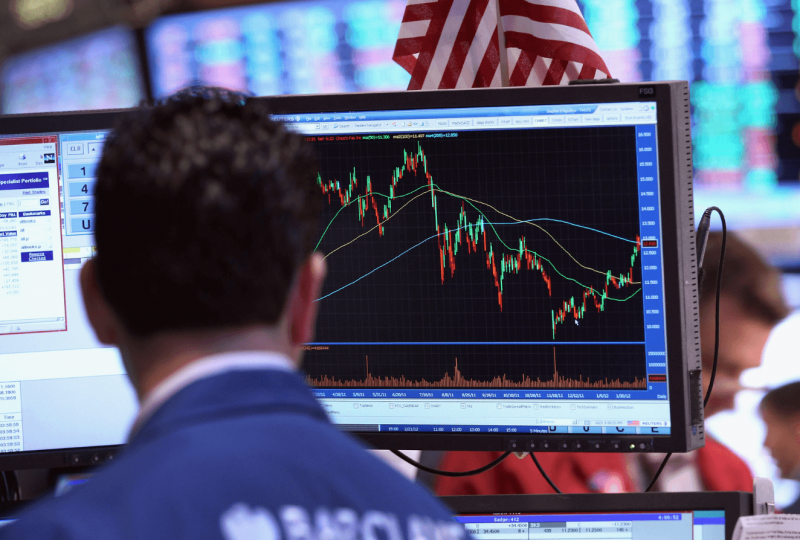How Liquidity Depth Affects Slippage in High-Volume Trading
Aug 20, 2025

Liquidity shapes pretty much everything in the financial market. From price stability to processing speed, the availability of assets and participants is a key element that you must consider.
In high-volume trading, a good liquidity depth ensures prices do not dramatically change when orders are executed. On the contrary, thin markets face massive volatility when large volumes are processed. This small difference can lead to significant losses when moving tens of thousands in the stock market, for example.
Let’s we will explain how liquidity depth impacts trading slippage and what brokers must consider to ensure a consistent order flow.
Key Takeaways
- Liquidity depth is a key determinant of slippage and order flow quality in financial markets.
- Deeper markets can absorb large-volume trades with minimal price impact.
- Traders can measure and monitor market depth to reduce order execution risk.
Understanding Market Liquidity Depth

The volume of buy and sell orders available at different price levels in a given market is called liquidity depth. It is an alternative way to describe liquid and illiquid markets by considering the actual order distribution in the order book of the underlying asset, whether it is a currency pair, digital asset, stock, etc.
Deep liquidity means there is a sufficient amount of orders above and below the current market price, allowing large traders to be passed without causing significant volatility.
In comparison, thin liquidity refers to markets with fewer available orders, increasing the chance of slippage and price fluctuations when large orders are executed.
Slippage in Financial Trading

Slippage refers to the situation where your order executes at a different price than the one you anticipated. Let’s use the example of a trader who places a buy order for $100, but by the time the order executes, the true price may have reached $100.90 or $99.20.
This occurs because the rate may fluctuate in the interval from the time of order placement to the implementation of the order in the system, usually owing to volatility, poor liquidity, or delays in order handling. It is most often encountered in volatile markets, where the prices are moving quickly and the liquidity is dispersed.
Slippage is of special concern in volume-based trading because large orders may consume apparent liquidity quickly and move execution into less favorable prices.
This differential pricing is based on such factors as market volatility, speed of execution, and liquidity depth — swift processing and deep order book connections are required in order to reduce slippage and offer lower transaction costs.
Fast Fact
Positive slippage, which occurs when an order is executed at a better price than expected, is rare and typically happens in low-volatility, high-liquidity markets.
How Liquidity Depth and Slippage are Connected
The connection between high-volume trading liquidity depth and slippage is straightforward: the deeper the liquidity, the lower the risk.
When an order is placed, it is matched using trading engines with available orders in the order book. In a deep market structure, there are many pending buy and sell orders at multiple price levels, allowing large trades to be filled without significantly affecting the original market price.
On the other hand, in shallow markets, there are a few pending orders in the order books. When large-volume orders are passed to the market, available orders at the best price get exhausted very quickly, forcing the order to be filled at different rates down the book, creating a price slippage.
Let’s take liquidity depth in Forex trading as an example. A deep EUR/USD market can absorb a $10 million order with minimal price change, while less liquid assets like USD/TRY could experience significant price movement, or slippage.
In institutional or high-frequency trading, even small slippage can impact profitability, making liquidity depth analysis critical for a successful trading strategy. Therefore, traders and brokers must actively monitor market depth and adjust order sizes, timing, and routing to minimise slippage and improve execution quality.
Factors Affecting Market Depth
Several variables impact the market depth and the level of slippage in high-volume trading. They expand from liquidity and trading activities to macroeconomic conditions affecting the entire industry. Let’s review what influences slippage and depth and how to analyze them.
Liquidity Providers
Liquidity providers (LPs) are institutions or market participants that continuously quote buy and sell prices and make financial assets more available to end-users.
Reliable LPs with institutional offerings contribute to deeper order books, ensuring that large traders can be processed smoothly, without causing major shifts in the market. In contrast, low-tier LPs often come with price volatility risks and a higher slippage chance due to shallow order book connections.
Trading Volume

High trading volume generally correlates with deeper market reach. When there are many participants and market makers actively buying and selling various assets at different price levels, new orders are more likely to get matched and executed.
However, sudden spikes in inflows during volatile events can temporarily drain depth, causing slippage even in typically deep markets.
Market Conditions
Strong demand for a specific asset can deepen market liquidity as more participants place trades and order books are more populated. Conversely, low demand may cause spreads to widen and order book depth to thin out.
Speculations and demand-driven changes in liquidity are common in emerging markets, and thinly traded assets with fewer active participants have higher slippage chances.
Economic Factors
Macroeconomic factors, such as interest rate announcements, geopolitical events, or sudden economic shocks, affect market depth.
In times of uncertainty, many traders withdraw orders to save precious bucks for rainy days, resulting in thin offerings and higher slippage. On the other hand, stable economies tend to encourage investing, resulting in higher participation, deeper order books, and more resilient markets.
How to Measure the Depth of Market
Measuring market depth requires tools and data sources that display order book activity and real-time changes.
Traders can use various analytical methods to measure liquidity at each price level and identify patterns in market behavior. Below are key methods used to measure and interpret liquidity depth.
Order Book Analysis
The order book contains all current buy and sell orders by level of price. Studying the order book, the trader can determine where the large volume of market liquidity resides and where, in the future, possible support or resistance may come.
This transparency facilitates optimizing order entry, timing entry into the market, and steering clear of high-slippage regions.
Level 2 Market Data
Level II market information offers greater insight than regular quotes by indicating the number of orders for securities for each price level.
This helps traders determine the actual liquidity depth beyond the best bid and ask prices. Professional traders and brokers commonly use Level 2 information for proper investment decisions and trading plans.
Market Depth Charts

Depth of Market (DOM) charts are graphical representations of liquidity available at different prices. Using such charts, traders can easily spot where there are large concentrations of orders and can more easily anticipate entry and exit points.
DOM is a standard platform for futures, Forex, and institutional traders with large positions, where traders are able to view market sentiments, support and resistance levels, and supply and demand conditions.
Liquidity Heatmaps

Heatmaps for liquidity illustrate regions of low and high liquidity zones over time graphically. Traders can anticipate where risks of slippage may rise by monitoring the evolution of liquidity, facilitating decision-making.
Heatmaps are especially valuable in volatile markets, allowing institutional investors to adjust strategies before liquidity gaps cause unfavorable execution outcomes.
The Role of Technology to Minimise Slippage in High-Volume Trading
With the evolution of trading, traders and brokers used cutting-edge technology to monitor the movement of markets and prices in real-time, in the past, and in future times.
This plays a critical part in limiting slippage in trading, particularly where investors are able to foresee trends and anticipate shifts in high-volume markets where milliseconds become significant factors.
This renders superior execution algorithms extremely critical in obtaining control over large orders by dividing them into smaller orders and feeding them to multiple liquidity pools and providers in order to prevent draining the order book.
Low-latency connectivity is another critical factor, which provides nearly zero delay for order execution and settlement. Brokers can accomplish the same by employing direct market access (DMA) and co-located servers, particularly in fast-evolving markets.
Brokerages are constantly in search of a trusty liquidity aggregation engine, like the one in B2TRADER — a potent multi-asset trading platform by B2BROKER.
The platform combines liquidity from multiple providers into a single deep pool, allowing brokers to offer better pricing, reduced spreads, and faster fills. Paired with FIX API integration, this solution gives high-volume traders the precision and speed needed to thrive.
Conclusion
In high-volume trade, the most relevant factor in the impact of orders placed on the prices of markets, commonly known as slippage, is the liquidity depth.
Fluid markets facilitate smooth order flow and narrow spreads, and illiquid markets raise the probability of asset prices moving on big tickets. Knowing how liquidity depth impacts slippage—and tracking it in metrics such as order books, DOM charts, and heatmaps—traders can tailor their approach to narrow execution risk.




